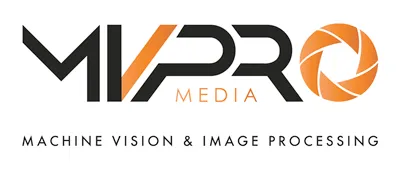Rachel Levy-Sarfin, North American Editor at Large, wrote in our first issue about the Market in 2025. You can read her article below.
Going into 2025, the machine vision market in North America shows strong signs of growth. Grand View Research predicts a compound annual growth rate of 11.1% between 2024 and 2030.
We’ll dive into what’s driving this growth, how this technology is being applied, what challenges exist in the market, and what the future might hold.

What’s Driving the Growth of Machine Vision Technology in North America?
The machine vision market in North America is growing and will continue to grow because it’s driven by a need for increased efficiency in various industries. Furthermore, advances in hardware and software make these systems even more accurate, which builds trust in them.
Machine vision systems have progressed since their inception. They now feature better cameras and AI technology, so these systems can effectively identify details that a human might miss. Moreover, machine vision systems can process data faster than humans, so they can boost efficiency in a variety of situations.
Applications for Machine Vision Technology in North America
The most popular applications for machine vision in North America are:
- Manufacturing
- Logistics
Machine Vision in the Manufacturing Industry
There’s a growing demand for automation and enhanced quality assurance in the manufacturing industry. Machine vision systems play a crucial role in increasing the efficiency of processes and workflows.
In the past, humans would be responsible for quality assurance tasks or for picking products. Machine vision can automate these processes, saving time and money.
In 2023, machine vision systems driven by AI and using high-quality cameras, were able to detect the smallest imperfections on circuit boards. Their defect recognition rate was over 99%.
Manufacturing Industry Sectors Using Machine Vision
Certain manufacturing industries in North America have begun incorporating machine vision systems into their processes, such as:
The automotive industry – Pharmaceuticals – Chemicals – Electronics and semiconductors – Pulp and paper – Food and beverage – Printing and labeling – Glass – Metal
Machine Vision in Logistics
The logistics space in North America has also seen the benefits of implementing machine vision systems. Much like the manufacturing industry, logistics can become more efficient with the addition machine vision.
Machine vision can also play a vital role in quality control within logistics. Cameras and sensors placed in various locations in warehouses help companies track and manage inventory in real time. Machine vision systems can automatically identify, track, and count items, as well as update inventory records and trigger reorders when stock is low.
Additionally, machine vision systems can be combined with robots to sort and pack inventory. Robots with mechanical arms, built-in cameras, and sensors can detect items on shelves, pick them up, then route them to the right location.
Machine vision systems can optimize efficiency outside of the warehouse, too. They can be implemented in delivery fleets, allowing vehicles to be tracked as they travel along their routes.
Aside from the benefit of greater accuracy and efficiency, machine vision systems collect valuable data from logistics processes. Decision makers can assess which bottlenecks exist in the process to streamline them. Machine vision systems can also monitor equipment for signs of wear and tear, so vital warehouse components don’t break down unexpectedly. When it comes to delivery fleets, companies can use the data gathered from cameras and sensors to improve the efficiency of routes.
What Challenges Exist in the North American Machine Vision Market?
While the driving factors behind machine vision adoption in the North American market will propel it to further growth, challenges exist to greater expansion.
Machine vision systems remain an expensive investment for companies. That expense is compounded by two factors: the lack of skilled personnel to operate these systems and analyze the data, and the integration of machine vision systems with businesses’ existing technology stacks. As machine vision is still an emerging technology, it will take time to effectively the current and future workforce on how to use these systems. At the moment, training adds an additional expense to implementation, creating another barrier for companies.
The challenge of integrating machine vision systems into existing tech stacks has also hindered the expansion of this technology in the North American market. Legacy systems still dominate in many industries, with the mindset being, “if it ain’t broke, don’t fix it.” There are a few problems with that line of thinking. First, vendors may eventually stop supporting those systems. Second, those systems aren’t built to integrate with modern and emerging technologies, such as machine vision. However, companies who don’t have the resources to upgrade their systems won’t invest in machine vision, which will stall its reach.
What the Future Holds for Machine Vision in North America
Although there are challenges that might slow the growth of machine vision adoption in North America, there are also some compelling factors that might counteract those barriers.
While many companies are still relying on legacy technologies, there are others that are embracing Industry 4.0 technologies and processes. Industry 4.0 and smart technologies are ushering in a new era of automation and efficiency, something which leading firms realize is crucial to their continued success.
There’s a great need for higher efficiency in the quality control process within the manufacturing industry, and machine vision systems, in combination with AI, can satisfy it. Their incredible accuracy and speed can cut down tasks that previously added hours.
Machine vision can also make logistics more efficient. It’s an important part of automating warehouse processes, including quality control, picking orders, and optimizing delivery fleet routes. These applications also require the combination of AI. As AI evolves to be more accurate and reliable, companies will feel more comfortable using it. Some analysts believe machine vision will become a competitive advantage in the logistics industry, as it helps future-proof companies.
Manufacturing and logistics aren’t the only sectors where the use of machine vision will grow. As the technology matures, other industries in which there’s a need for greater efficiency and quality control will find applications for it. The military and defense industries have been experimenting with machine vision systems for a few years, and the agricultural industry is also piloting projects featuring this technology. In the year to come and beyond, more industries will reap the benefits machine vision can bring.
















